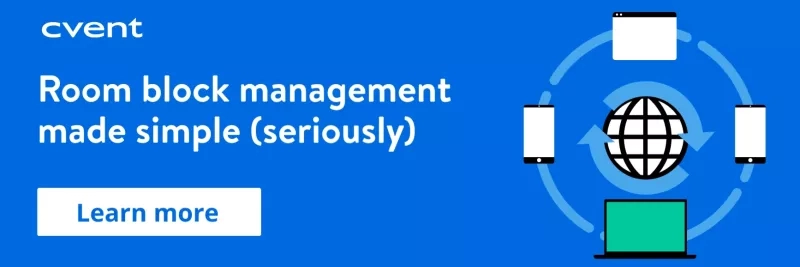Hoteliers and hotel revenue managers know how quickly markets can fluctuate and how fast demand for travel can change. As demand changes, successful hotels need to be able to quickly adjust revenue strategies to capture as much business as possible, even when overall travel to the area is lighter. For many revenue managers, implementing hotel dynamic pricing strategies have helped them stay afloat during uncertain times.
We’ve created a comprehensive guide for hoteliers that breaks down hotel dynamic pricing. Whether you’re looking to implement dynamic pricing for the first time, or brush up on the current tools available for hoteliers, we’ve got you covered. In this article, we’re taking a deep dive into hotel dynamic pricing: what it is, how it works, and how to use it to boost occupancy and revenue.
Save this guide to use when adjusting your hotel dynamic pricing strategy!
No two hotels are exactly alike. With different services offered, amenities available, and different markets to work within, pricing strategies will vary from property to property. While there is no one-size-fits-all answer to hotel revenue management, many hoteliers find that dynamic pricing helps to increase hotel revenue, even in these ever-changing markets.
What is dynamic pricing?
Hotel room rate pricing strategies can be broken down into two primary categories: static and dynamic pricing.
Static pricing occurs when a hotel keeps the same room rates over a period of time. Room rates do not fluctuate based on market trends like occupancy or demand, but instead remain the same night after night. Hotels that use static pricing techniques know their market well, have closely monitored year over year trends, and are confident in the occupancy and rate they will be able to capture.
A hotel using dynamic pricing, however, constantly fluctuates room rates based on market trends like occupancy and overall demand. Rates can change from day-to-day, or even hour-to-hour, based on real-time market data. By focusing on area supply and area demand, hotel dynamic pricing allows room rates to fluctuate constantly to capture more business.
Dynamic pricing is also commonly referred to as “demand-based” or “time-based” pricing. Hoteliers that use demand-based pricing strategies see their room rates fluctuate based on traveler demand. When demand is low, room rates are lowered in an attempt to capture their fair share of the minimal demand in the market. When travel demand is high, however, such as during an area-wide special events or during peak season, room rates are raised—reflecting the heightened demand.
While the concept of demand-based pricing is not new, it has become more popular as technological developments have allowed hoteliers to manage and measure demand information in real-time. High speed internet connectivity, revenue management monitoring software, and faster data processing capabilities allow revenue managers all over the world to track moment-to-moment changes. Hoteliers can also change their pricing strategy with a few quick clicks thanks to impressive software developments, compared to the much more time-consuming and tedious process in the past.
How do hotels use dynamic pricing?
When hotels implement dynamic pricing, they are constantly adjusting their room rates based on mathematical algorithms aimed to increase occupancy based on area demand. To accurately focus the algorithms to increase occupancy without sacrificing ADR and RevPAR, hoteliers must understand their customers and their customer behavior.
Dynamic pricing algorithms can be targeted to focus on:
● Occupancy demand.
● Guest booking patterns.
● Different market segments.
● Day of week patterns.
● The average length of stay (ALOS) of guests.
● Room type preferences.
Successful hotel revenue managers understand their peak seasons, shoulder seasons, off-seasons, areawide special events, market segment performance and other demand generators for their market. They use market research to better understand their customers and what they are looking for. Detailed market research allows hoteliers to anticipate market fluctuations and develop a rate strategy aimed at increasing ADR, RevPAR, and occupancy.
The success or failure of price optimization often depends on how the strategy is specifically implemented at an individual property. Hotels may choose to offer discounted rates on OTA bookings, increase or decrease rates based on hotel occupancy levels, or set boundaries on the number of fluctuations that occur during a specific time period. Dynamic pricing can be tweaked and targeted in many different ways depending on the revenue goals of a specific property.
What are the pros and cons of dynamic pricing?
Dynamic pricing has an upside and a downside, like most hotel revenue strategies. How well a hotelier manages their rate strategy can both positively or negatively impact a hotel’s overall performance.
The Pros
1. Create or increase demand.
Hoteliers can also use dynamic pricing to appeal to different market segments that don’t typically book at their property, expanding their audience, increasing revenue potential, and minimizing the potential that rooms go unsold.
2. Offer competitive rates.
By consistently adjusting room rates based on activity in the market, hotels that use dynamic pricing are able to stay in line with the competition. Pricing algorithms can be set to include the rates being offered by the comp set and overall area demand, to ensure that hotels are staying competitive with other rates in the market. Offering rates higher than other hotels in the area will likely push guests to book elsewhere, and underpricing will lead to low RevPAR and ADR indexes in revenue reporting.
3. Better appeal to your audience.
Revenue managers who choose to use dynamic pricing are interested in offering room rates based on what guests are willing to pay. When this occurs, it benefits both parties: hotels see increased occupancy because more guests (who feel that they’re getting a good, fair rate) are booking at the property. Everyone wins, and hotels continue to gain a better understanding of their target audience while bringing in new guests and increasing hotel customer loyalty.
4. Save time and increase profits.
Manually pulling and analyzing data from various sources is a lengthy process that is incredibly time-consuming for hotel revenue managers. Rate maintenance is only one of the many responsibilities revenue managers tackle on a daily basis. They need ample time to focus on other important duties such as creating marketing campaigns, developing group business strategies, event management, and other tasks depending on the delegation of duties at their hotel.
When systems communicate with one another, comprehensive data from multiple sources can be viewed easily allowing for quick decision making. Not only can dynamic pricing lead to higher occupancy percentages, average daily rates and RevPAR performance, it saves a lot of time on forecasting future demand, optimizing rates and monitoring performance.
Learn how to be the venue event planners need
The Cons
1. Frequent price changes & rate integrity questions.
While frequent changes in room rate may help a hotel maximize its profits, it may lead to questions of rate integrity from potential guests. If a guest see’s a room rate of $99 at 10am, for example, but the rate is $104 when they go to book at noon, that could cause the traveler to view the hotel as inconsistent, unreliable, or worse—greedy. Seeing constant fluctuations in pricing, especially over short time periods, could end up pushing guests to book with the competition.
2. The difficulty of managing changes.
Who’s in charge of your hotel’s dynamic pricing strategy? Revenue managers, who may see the need to change prices multiple times in one day, may find themselves at odds with the opinion of brand managers or ownership companies who would like their customers to see more consistency.
3. Technical difficulties.
Reliable dynamic pricing results from proper communication between multiple software systems. Most properties that use this rate strategy have both a PMS (property management system) and an RMS (revenue management system) that communicate with each other to spark changes. These systems also usually work in conjunction with channel managers that monitor performance of hotel distribution channels.
If these systems don’t communicate properly or do not integrate seamlessly, rate changes may not be triggered accurately or at all. When these systems don’t integrate, data must be input manually, which can lower accuracy and suck up a lot of valuable time.
4. A narrow perspective can hurt in the long run.
Dynamic pricing strategies that are too focused on a singular KPI, typically occupancy, could end up hurting the bottom-line numbers in the end. If a hotel chooses to drop lower-rated rooms or discounts after the hotel reaches a certain occupancy, they may end up displacing the demand that would have filled the remaining rooms.
An example of hotel dynamic pricing gone wrong:
Let’s say that a hotel has decided to drop government rates, LOS discounts, and raise the BAR rate after the hotel hits 85% occupancy. The hotel hits 85% occupancy at 9am, and the discounted rates are now unavailable for the night. Unfortunately, historical data shows a lot of same-day government reservations were made at the hotel during this time period in past years.
In this scenario, because the revenue manager didn’t take individual market segment demand into consideration before setting their dynamic strategy, many of the travelers may not have been able to book the desired government rate and moved elsewhere as a result. While the goal was to maximize the rate on the remaining 15% of rooms available, what the hotel has actually done is pushed part of the remaining travel demand away, leading to lower occupancy and RevPAR numbers overall.
Dynamic pricing tools and resources for hoteliers:
From software systems to data analysis tools, there are a variety of helpful resources available to help hoteliers and revenue managers improve dynamic pricing performance.
● SmartCONNECT is an integration software that allows PMS systems like OPERA to seamlessly connect with RMS systems and channel managers and other 3rd party vendors.
● Use a software system or application like Sabee (or a comprehensive PMS system) that allows you to view booking history, set pricing, manage discounted rates, and set multiple rate plans in one place.
● Ensure that your hotel maintains rate integrity through Cvent Business Transient (formerly Lanyon Travel). This corporate travel management software allows hoteliers to confirm and monitor their negotiated rates, access GDS, manage RFPs, and track transient demand generation in one place.
● Stay on top of the competition using the Competitive Set Dashboard. This Business Intelligence tool analyzes data to track a hotel’s performance against the competition, find market trends, and analyze demand.
Get started on your 2023 business plan
Frequently asked questions about hotel dynamic pricing:
1. How does hotel dynamic pricing change room rates?
Dynamic pricing can help a hotel boost their revenue by monitoring market fluctuations in real-time across a variety of revenue management channels and property systems. The systems communicate with each other and either increase or decrease hotel room rates based on factors like market demand, hotel occupancy, booking patterns, and other key variables.
2. Do all hotels use dynamic pricing?
While some hotels still follow a static pricing model, the vast majority of hotels have implemented dynamic pricing. With the development of channel management software and comprehensive PMS systems, most hotels only use static pricing for special events or high demand dates when rates and booking patterns are already heavily restricted.
3. What is the first step to start dynamic pricing at a hotel?
To implement a dynamic pricing strategy, the first step is hiring a hotel revenue manager—not a general manager that works with revenue, but a full-time focused revenue manager. Optimizing and managing revenue is a complex job, and at least one role at the hotel should be fully focused on maintaining it. Larger hotels often have an entire team dedicated to revenue management and optimization.
4. Do businesses other than hotels use dynamic pricing?
Many businesses use dynamic pricing. Airlines and car rental services offer dynamic pricing that fluctuates based on demand, dates, and other factors like weather. Giant retailers like Walmart and Target also use dynamic pricing based on holiday shopping and other seasonal changes. Even sporting events use dynamic pricing to fill seats during low demand times. Baseball fans can often find discounted day-of tickets or rain-reduced tickets available.






